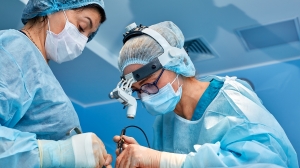Virginijus Sinkevičius, Lithuania’s minister of the economy, speaks to Andrew Wrobel about economic opportunities, as well as the challenges that the country is facing.
AW: The World Bank forecasts a “plateauing” of Lithuania’s annual GDP growth rate at just over three per cent for 2014-2019. What is your forecast for 2019?
VS: Well, in 2017, GDP growth was the fastest we have seen in the last five years, a result of 13.2 per cent growth in exports, a 7.3 per cent increase in capital investment and a rise in domestic consumption of 3.3 per cent. Given the results of Lithuania’s recent economic development, changes in the external environment and favourable conditions for increased domestic demand, we project that Lithuania’s GDP could grow by 3.4 per cent in 2018. In the medium-term, GDP should subsequently continue growing as projected, and reach 2.8 per cent in 2019 and 2.5 per cent both in 2020 and 2021.
AW: So which sectors are you expecting to contribute most to growth?
VS: Without question life sciences, the laser industry, FinTech, blockchain and engineering will be the backbone of our economy. Due to extremely favourable regulation by the Bank of Lithuania and the various sandboxes which have been created, Lithuanian FinTech and blockchain have grown by more than 40 per cent, attracting tens of foreign companies, who see Lithuania as their bridge from Israel, China, Singapore and other countries to the EU market. Interest in Lithuania is growing.
Engineering is all a traditionally strong industry, and with new technologies like robotics and advanced transportation systems we see a tremendous opportunity to grow, because Lithuanian companies are already manufacturing advanced automation systems and technologies for autonomous vehicles.
Over the past five years, the turnover of the laser sector almost doubled; growing from 46.5 million euros in 2011 to more than 90 million euros in 2016. Over the past eight years, the sector‘s income has more than tripled. Almost 90 per cent of Lithuanian laser production is exported, and that is unlikely to change.
Finally, with one per cent of GDP created by life sciences, Lithuania is already one of the main players in Europe; our life sciences sector is six times the size of the European average. Moreover, we have a goal and a strategy worked out to increase the life sciences share of GDP to five per cent by 2030, which would make us the world leader.
AW: What is your strategy for ensuring sustainable economic growth?
VS: Lithuania‘s growth strategy is based on boosting productivity and increasing competitiveness. Lithuania was the EU leader in terms of productivity growth in 2017. The focus is to maintain the momentum and reduce the productivity gap in the medium term.
In order to ensure sustainable growth in 2018, the government is implementing six major reforms:
innovation reform aimed at promoting investment in innovation, creating a major innovation incentive package as well as consolidating and strengthening the research system; structural reform of education, covering secondary, vocational and higher education; tax reform aimed at making the taxation of labour more conducive to the creation of jobs, the promotion of investments and entrepreneurship; the reduction of the shadow economy so as to implement measures aimed at promoting fair tax payments; health reform, covering all types of treatment and nursing, including measures aimed at promoting healthy lifestyles; and finally a cumulative pension reform to prevent the shrinking of overall income levels in old age.
These six priority reforms are expected to boost annual economic growth up to two per cent of GDP or 1.2 billion euros by 2025–2027. The synergies and the results of these reforms will change Lithuania’s social and economic situation significantly, especially when it comes to addressing the demographic issue and boosting economic growth. Almost 26,000 job vacancies will be newly created before 2025. The reform will result in a 1.6 per cent reduction in the unemployment rate.

AW: Lithuania joined the eurozone in 2015. Since then, how has the euro affected the business environment and investment, and the economy overall?
VS: Joining the eurozone contributed to economic stability, helped do away with exchange rate risks and had a positive impact on overall economic growth. Likewise, other benefits resulting from EU membership are equally important for the country’s economic growth, including participation in the single market, which makes a considerable contribution to Lithuania’s economic growth through increased exports.
AW: The country has been experiencing steep de-population since the 1990s. How has this affected the Lithuanian economy and the labour market? Is there an increasingly limited talent pool? What reforms do you plan to undertake, or have already undertaken, to deal with this issue?
VS: With economic growth, the rate of unemployment will continue to decrease, and will account for 6.5 per cent in 2018.
When it comes to migration, the situation is favourable since emigration is decreasing and immigration is growing. Lots of Lithuanian citizens who left the country years ago are now coming back because of the growing economy, increases in wages and also because a number of foreign companies have established themselves in Lithuania and offer attractive working conditions.
Moreover, the government is making efforts to simplify immigration procedures for foreign specialists who are in demand on the labour market, so companies may use fast track procedures to employ them.
AW: Surely emigration of the young and skilled workforce and the general ageing of the Lithuanian population will affect the silver economy? How are you tackling this problem?
VS: Recent data show an increasing trend of young and skilled people returning to the country. Although it is too early to draw conclusions about the impact of return migration in the medium term, the status quo suggests that policy makers can manage to address long term demographic challenges. Lithuania has recently adopted a new demographic strategy, encompassing migration and integration, and is currently working out its implementation plan. The government is undertaking initiatives to increase the return of migrants and integrate them to the labour market.
AW: At a time when populations across emerging Europe are ageing, we are experiencing modernisation and digitalisation of not just our economics, but our societies. How can Lithuania adapt its older generation to these processes, which may of course seem alien to them? For example, would you encourage the over 65s to embrace FinTech, or other forms of technology?
VS: The success of digitalisation and economic growth depend on the inclusion of all age groups and gender diversity. The size of the country is the reason of why we can exclude no one from the digital transformation process.
There still exist certain groups of the Lithuanian population who do not use or rarely use modern digital tools and the internet in their daily lives. Many Lithuanians use the internet on a daily basis for tax reporting, banking services, searching for professional information or entertaining content. In order to be able to carry out daily tasks online, everyone needs to constantly improve his/her digital skills. The population groups to whom most attention should be given include seniors, those on low-income, the disabled, people in the labour market, teachers, rural residents and the young unemployed.
Given the need to increase the digital skills of the population and in order to achieve the aims and tasks set in the European Digital Skills Strategy, special attention is being devoted to the development of digital skills in the Lithuanian Digital Agenda seeking to pursue digital skill enhancement goals and objectives. The aim is to reduce the digital divide by encouraging people to gain knowledge and skills required for the successful use of ICT.
We are also implementing the Connected Lithuania project to promote the use of e-services, FinTech and similar technology among older people. This includes visual manuals and hands-on learning sessions. At community level, we have nominated digital champions to facilitate the learning process for their peers. We also encourage younger people to help their families and relatives by personally teaching them digital skills.
AW: What are the other economic challenges facing Lithuania? How have geopolitical tensions with Russia affected Lithuania’s economy?
VS: The EU has imposed restrictive measures in response to Russian actions in Ukraine, and Lithuania supports these diplomatic measures, asset freezes, visa bans and economic sanctions.
In general, Lithuanian exporters are succeeding quite well in redirecting the export of goods to other markets, in particular to the EU28, so the effect of the economic downturn in Russia and the embargo on the Lithuanian economy was temporary. Moreover, as Lithuania’s trade relations with Russia were mainly based on re-exports, which created low value-added, the effect on the Lithuanian economy has been small.






… [Trackback]
[…] There you will find 86624 more Infos: emerging-europe.com/interviews/lithuania-towards-the-future-economy/ […]